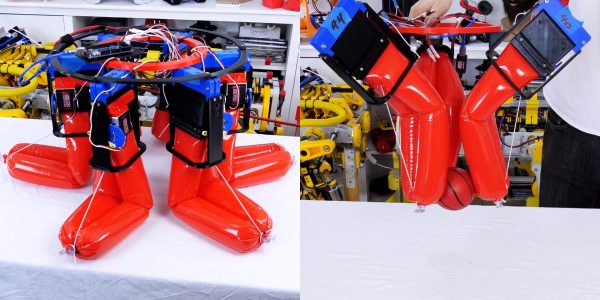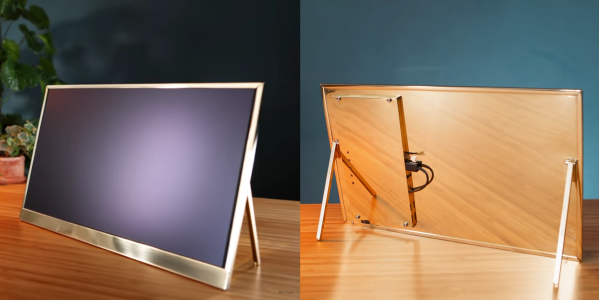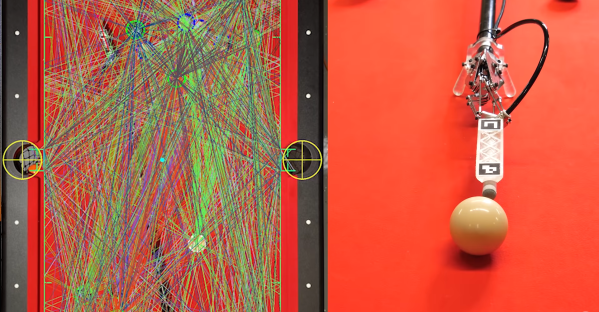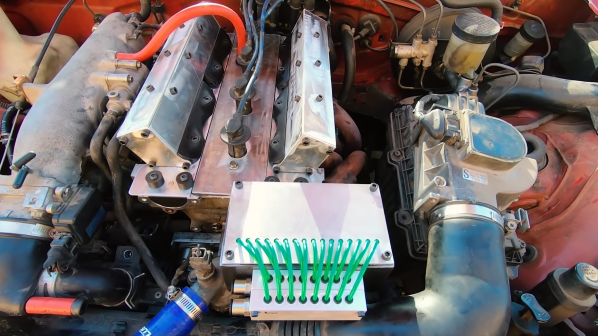[James Bruton]’s impressive portfolio of robots has always used conventional rigid components, so he decided to take a bit of a detour and try his hand at a soft robot. Using a couple of few inflatable pool noodles for quick prototyping, his experiments quickly showed some of the strengths and weaknesses of soft robots.
Most of the soft robots we see require an external air source to inflate cells in the robot and make the limbs actuate. Taking inspiration from a recent Stanford research project, [James] decided to take an alternative approach, using partially inflated tubes and squeezing them in one section to make the other sections more rigid. He bought a couple of cheap pool noodles and experimented with different methods of turning them into actuators. The approach he settled on was a pair of noodles tied together side by side, and then folded in half by an elastic cord. As one end is squeezed by a servo bellows, the internal pressure overcomes the tension from the elastic cord, and the “elbow” straightens out.
[James] tested various arrangements of these limbs to build a working hexapod robot but to no avail. The simple actuating mechanism was simply too heavy, and could just lift itself slightly. This highlighted a common theme in almost all the soft pneumatic robots we’ve seen: they carry very little weight and are always tethered to an external air supply. The combination of stretchy materials and relatively low pressure compressed air can only handle small loads, at least in Earth gravity and above water. Continue reading “Pool Noodle Robot Shines A Light On The Pros And Cons Of Soft Robots”
















